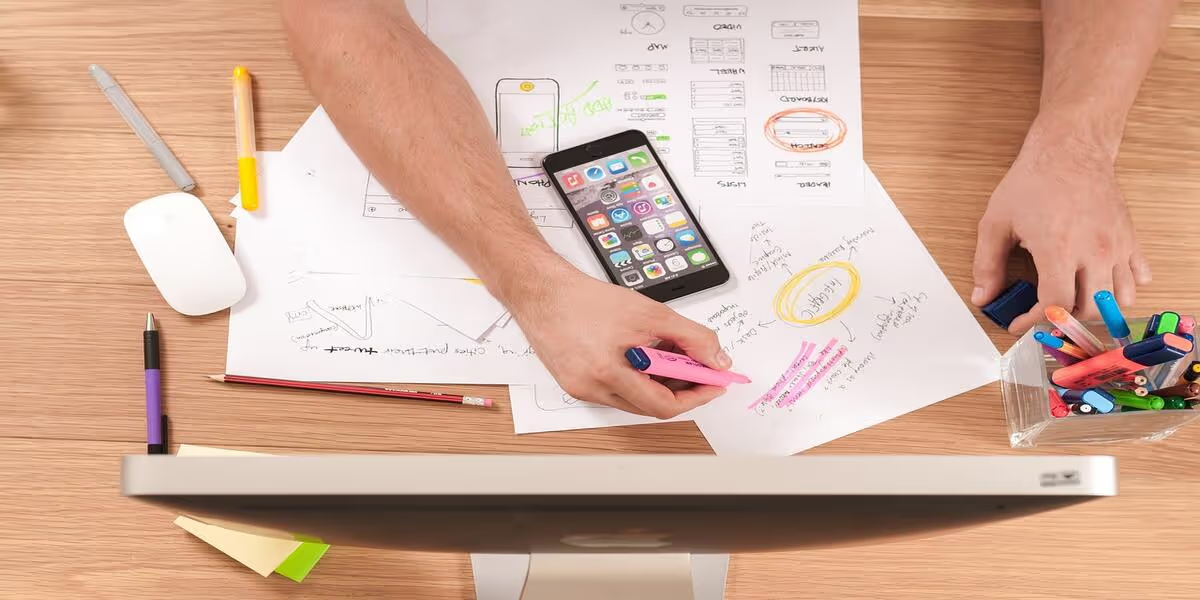Graphic design is a boon due to the increasing number of brands worldwide. Visual communication is a must when connecting with a brand’s target audience. A new brand won’t scale without standout branding and marketing materials. Whether you’re a professional or up-and-coming graphic designer, you must own these nine graphic design tools this year.
1. Laptop/computer
A laptop is a graphic designer’s lifeblood because it’s where all the magic happens. Although a desktop is another robust graphic design tool, a laptop ensures you can work on projects anytime. But the only issue is selecting a poor-performing laptop, which can’t handle heavy graphic design software like CAD or 3D modeling.
Here are a few tips on choosing the best laptop for graphic designers:
- Good processor: Beginners can start with an Intel Core i5 processor, while professionals can choose an Intel Core i7 with quad-core processors. If buying an AMD processor, choose one with the A8 or A10 series.
- RAM storage: Ideally, 8GB RAM storage is enough. However, it’s better if you can find laptops with 16GB RAM storage.
- Graphic card: A mid-end graphics card works well with heavy graphic design projects. Go for AMD’s Radeon R7 or NVIDIA’s GeForce GTX1050.
- Resolution: The higher, the better. Look for laptops with resolutions between 1600x900 and 1920x1080.
- Screen size: The same goes for laptop screens. The bigger the screen, the easier for designers to complete quality projects, which means 15 inches or higher is recommended.
- Storage capacity: A 1TB HDD is recommended to install heavy design software programs and store projects.
2. Graphics tablet with stylus
A graphics tablet is one of the most useful graphic design tools for amateur and expert graphic designers. It replaces a drawing table, pencil, chalk, brush, or paper. The only difference is that drawings are digital and are easily integrated into digital graphic design platforms.
The graphics tablet size depends on the designer’s preference. But the important thing is that the tablet’s screen reflects the computer screen’s ratio, which is 16:9, 16:10, and 4:3 for older ones. Additionally, prioritize a higher-resolution tablet over its size.
As for the stylus, choose a high accuracy. Optimal accuracy of 0.25 mm and minimum accuracy of 0.5 mm are recommended. The essential thing is finding a stylus with high-pressure levels ranging from 1024 to 8192 pressure levels or more.
3. Smartphones
Another gadget that goes with your other graphic design tools is a smartphone. It helps graphic designers keep their creative juices flowing even on the field.
Here are a few ways smartphones help graphic designers:
- Convenient for communication
- To take photographs
- Download helpful graphic design apps
- Capture spontaneous ideas
- Scan images
- Schedule your projects and take note of deadlines
4. Camera
Some graphic designers who need to take photos and edit them need a decent camera. A good DSLR with the proper specifications will do the trick. Both the Nikon D-series and Canon EOS are the leaders in the market.
When choosing the best camera, here are some things you must consider:
- DSLR vs. mirrorless: Choose one with interchangeable lenses or a few lenses. A DSLR has the former, while mirrorless cameras have the latter. While both can capture high-quality photos, mirrorless cameras are lighter and faster.
- Image processor: The image processor is responsible for the images’ color tones, so find one which is perfect for you.
- Megapixels: High megapixels partially contribute to higher-quality photos. But consider other factors that create a stellar outcome.
- Sensor size: Another factor contributing to good photos is sensor size, which means the larger the sensor size, the better the outcome.
- ISO: ISO or International Organization for Standardization refers to the camera’s sensitivity to light. Choose a camera with a good ISO to create quality photos even in low-light conditions.
- Battery life: Longer battery life will allow graphic designers to work continuously without interruptions.
- Budget: Find a camera that fits your budget. Anything can range between $500 and $3,500. Check out these best cameras for creatives.
5. Monitor calibrator
Graphic designers work with color a lot. However, sometimes the color on your laptop or computer screen might give a different outcome on print materials. That said, you need a monitor calibrator to ensure colors match from screen to print.
Calibrate your computer by tapping into the Settings section and selecting the Calibrate button for both Windows and Mac. Or you can buy monitor calibrator tools, such as X-Rite i1Display Pro or Spyder5Express.
6. Cloud storage
Although you’ve chosen ample hardware storage on your laptop, cloud storage helps you synchronize and monitor projects. Cloud storage makes it easy for design team members to access and collaborate on projects.
It also lets you access the designs anywhere, especially if your laptop or computer isn’t accessible. Plus, getting cloud storage is affordable! Here are some options:
- Google Drive
- Microsoft OneDrive
- Adobe Document Cloud
- Dropbox
7. Graphic design software
Aside from these graphic design hardware tools, you need graphic design software to help you with design creation. And there is no shortage in the market out there. These graphic design tools help create and edit still images and videos.
Here are a few suggestions:
- Adobe Photoshop
- Adobe Illustrator
- VistaCreate
- Lunacy
- Sketch
- CorelDRAW
- GIMP
- Canva
Graphic Design Services: Your One-Stop-Shop Solution
If you’re a newbie, purchasing these graphic design tools might be too expensive. The camera alone will take a massive chunk out of your budget. Starting with a laptop and a few graphic design software programs are enough to kickstart your career in this industry. Once you develop your skills gradually, invest in good graphic design equipment to succeed in this niche.

